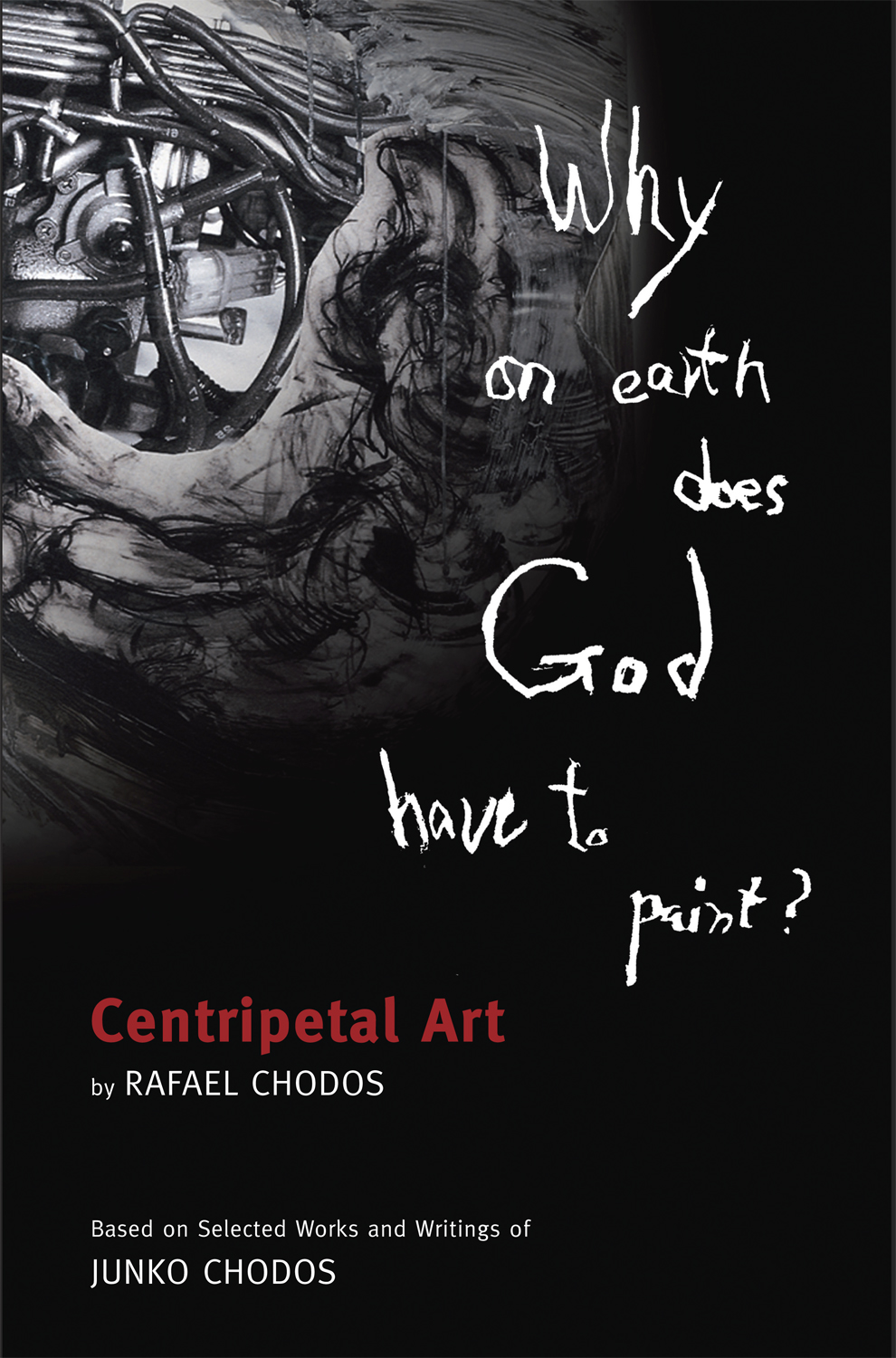
Learn more about the book, and see excerpts, here. | Why on Earth Does God Have to Paint? / Centripetal Art
by RAFAEL CHODOS
Based on Selected Works and Writings
of JUNKO CHODOS
(c) 2009 Giotto Multimedia
$35 plus $5 shipping and handling. 360 pages, Hardcover, with foldout chart at the end.
140 images. With image table, Endnotes, Bibliography, Table of Japanese Terms, and Subject Index
As a young child living through the allied bombings of Japan in World War II, Junko painted secretly, passionately, in bomb shelters and other hiding places. For years she viewed her art as something dark and ugly, something to hide from the world. But out of the blue when she was in her early thirties, during a desperate time just after she had moved to America, a spiritual teacher in Japan whom she had never met told a friend of hers that he had seen her art psychically, and that God was painting through her. When Junko heard this she gasped and whispered, Why on earth does God have to paint?
As she contemplated this question, Junko reached the realization that the darkest thing can become a source of radiant light and that art can reveal the mystery of this transformation. In this way she arrived at a new conception of art which she named “Centripetal Art.” The artist journeys towards her center in order to encounter divine presence there. The artwork is the trace on paper of her journey and of her struggle to transcend her personal fears and traumas. Creating art is a process of individuation. If the artist’s struggle is successful, then the viewer can participate in it and take steps on a journey of his own. This is the power of art, and its gift.
This book is the story of Junko’s journey told by her husband of nearly forty years. It includes an analysis of her powerful body of over a thousand works and shows how Centripetal Art can raise the consciousness of individual viewers.
Click here to read the April 2010 review by Peter Gimpel at RedHeiferPress.com. And find out more about the book at DrawntotheCenter.com See sample pages at CentripetalArt.com |